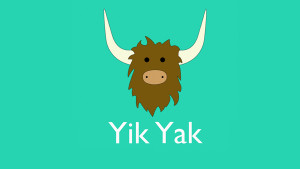
For the ALA Annual 2015 closing session, legendary leader of the The Band Robbie Robertson and Caldecott Honor-winning illustrator David Shannon discussed their collaboration on Hiawatha and the Peacemaker, a new children’s book with Shannon’s oil paintings and CD of original music by Robertson. ALA President Sari Feldman hosted the discussion.
Robertson recalled hearing the story of Hiawatha and his spiritual guide, the Peacemaker, when he was 9 years old on the Six Nations Indian Reserve in Ontario, Canada, where his mother was born and raised. Hiawatha was a strong and articulate Mohawk chosen to translate the Peacemaker’s message of unity for the five warring Iroquois nations during the 14th century. This message not only united the tribes but also forever changed how the Iroquois governed themselves—a blueprint for democracy that would later inspire the authors of the US Constitution.
The story has stayed with him and he has never been able to shake it. He told his mother, “When I grow up, I want to tell stories like that. She said, ‘Oh I’m sure you will,’ like a good mom.”
When Feldman asked him about storytelling and music as a form of activism, Robertson, who is of Mohawk and Cayuga descent, and said he spent years looking for a way to celebrate this part of his culture. “But I wasn’t comfortable with ‘let’s do the Indian thing now.’ It felt too random for me.” In 1994, he was invited by a group of Native American filmmakers to write the soundtrack for the documentary they were creating, and that project became the entry he needed.
When he had a rough idea of how he was finally going to tell this story, his son told him to pick this over all the other projects he had going on. His son did all the research and even secured the blessing of Six Nations Chief Roberta Jamieson. Once Robertson had the outline of the story, he was bold enough to ask his editor, “Who’s the best illustrator in the world?” His editor suggested David Shannon but warned he may not be able to get the busy artist.
“I thought maybe if I could meet him. I saw cover of The Rough-Face Girl, and it tore my heart out. I played him the song I wrote about Hiawatha and the Peacemaker, and he was a goner,” Robertson said. “Working with David and putting together the story was one of the most glorious experiences of my life.”
Shannon praised the storytelling of The Band. “I was very fortunate to be ‘the best illustrator in the world’” so he could work with Robertson. Usually an author and illustrator work separately through the editor, but he wanted to work personally with Robertson on this project.
Feldman asked them about their own experiences with libraries. Robertson said when he was growing up, there were two sides to libraries—he was in awe of them as repositories of all knowledge, but they were places the cool kids just didn’t go. Once he was on the road as a professional musician, however, he tried to make up for gaps in his education by reading a lot. When writing “The Night They Drove Old Dixie Down,” he wanted to put a new spin on the story, so he went to a library to do research. “Here I was doing rock and roll, and I had to go to the library to get what I needed.”
Robertson and Shannon pointed out that their story of Hiawatha bears little resemblance to Longfellow’s famous but historically inaccurate poem. When Feldman asked how librarians could balance cultural sensitivity and accuracy without limiting access to historical literature, Robertson said he believes it’s possible to still appreciate Longfellow the storyteller.
Shannon concurred: “There’s truth in fiction and there’s truth in history, and they don’t always coincide. Learning where you’re wrong is as important as learning where you’re right.”
Robbie Robertson on Hiawatha and working with David Shannon


